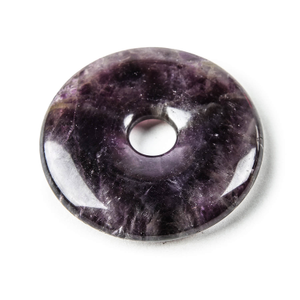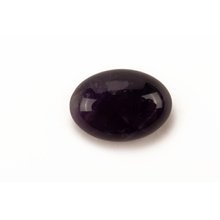- Jewelry-Making Supplies ▾
Design Jewelry with Confidence!
Seed Beads
Thread, Wire, & Stringing Materials
Findings & Components
Everything Else
- Kits & Collections ▾
Assemble Your World
Kits & Collections
- Subscriptions ▾
Want monthly Beading Happiness?
Subscriptions
- Learn to Make ▾
Want to learn more?
- Discounts & Deals ▾
Explore Today's Promotions!
-
Seed Beads
Thread, Wire, & Stringing Materials
Findings & Components
Everything Else
-
Kits & Collections
-
Subscriptions
- Home
- Beads
- Gemstone Beads
- Amethyst
ONLY VISIBLE ON EDIT MODE *
subtitle
page_content
videos
how to videos
Amethyst

Amethyst
Amethyst, a gemstone with a rich palette of violet hues, has captivated humanity with its beauty and purported metaphysical properties for centuries. As a variety of quartz, it is cherished for its striking appearance and its deep connection to history and lore. It inspires jewelry designers to incorporate this mesmerizing stone into their creations, bringing forth pieces that are not only visually stunning but also rich in meaning.
History of Amethyst
Amethyst's name derives from the Greek word 'amethystos,' meaning 'not intoxicated,' reflecting the ancient belief in its power to prevent drunkenness. Historically, it has been used by royalty to adorn crowns, rings, and scepters, symbolizing wealth and power. Amethyst is primarily mined in Brazil, Uruguay, Russia, and Zambia. Its use in jewelry dates back to ancient Egypt, and it has been valued throughout the ages for its beauty and its reputed spiritual and protective qualities.
Color and Jewelry-Design with Amethyst
Amethyst is renowned for its vibrant range of violet colors, from pale lilac to deep purple. This spectrum makes Amethyst beads a versatile and popular choice for jewelry design, allowing for a wide array of pairings:
- Complementary with gold or silver settings, which accentuate its royal hue.
- Paired with clear or white beads, highlighting its rich color.
- Combined with other gemstones, such as citrine (in ametrine) or pearls, for a mix of texture and color.
Amethyst beads can be used in necklaces, bracelets, earrings, and rings, offering elegance and a touch of mystique to any piece.
Physical Properties
Amethyst is a form of quartz, making it a hard and durable gemstone suitable for various types of jewelry. Its key physical properties include:
- Hardness: Amethyst scores a 7 on the Mohs scale, indicating good durability.
- Luster: Typically exhibits a vitreous luster when cut and polished.
- Transparency: Amethyst can range from completely transparent to translucent, adding to its appeal.
Metaphysical Properties
Amethyst is believed to offer a range of metaphysical benefits, including:
- Enhancing mental clarity and wisdom.
- Promoting calmness and peace, aiding in meditation and sleep.
- Offering protection from negative energies.
Healing Properties
In addition to its metaphysical attributes, Amethyst is thought to have healing properties that affect both the physical and emotional realms. It is said to:
- Support emotional balance.
- Help relieve stress and anxiety.
- Aid in the treatment of insomnia and promote restful sleep.
Amethyst, with its exquisite color and profound spiritual significance, offers jewelry designers a gemstone of unparalleled beauty and depth. Its versatility in design, combined with its healing and protective properties, makes Amethyst beads a perfect choice for creating pieces that are not only visually captivating but also imbued with a sense of tranquility and well-being. As you draw inspiration from Amethyst's rich hues and ancient legacy, let your jewelry designs reflect the unique blend of aesthetic appeal and spiritual depth that this gemstone embodies.
Amethyst, a gemstone with a rich palette of violet hues, has captivated humanity with its beauty and purported metaphysical properties for centuries. As a variety of quartz, it is cherished for its striking appearance and its deep connection to history and lore. It inspires jewelry designers to incorporate this mesmerizing stone into their creations, bringing forth pieces that are not only visually stunning but also rich in meaning.
History of Amethyst
Amethyst's name derives from the Greek word 'amethystos,' meaning 'not intoxicated,' reflecting the ancient belief in its power to prevent drunkenness. Historically, it has been used by royalty to adorn crowns, rings, and scepters, symbolizing wealth and power. Amethyst is primarily mined in Brazil, Uruguay, Russia, and Zambia. Its use in jewelry dates back to ancient Egypt, and it has been valued throughout the ages for its beauty and its reputed spiritual and protective qualities.
Color and Jewelry-Design with Amethyst
Amethyst is renowned for its vibrant range of violet colors, from pale lilac to deep purple. This spectrum makes Amethyst beads a versatile and popular choice for jewelry design, allowing for a wide array of pairings:
- Complementary with gold or silver settings, which accentuate its royal hue.
- Paired with clear or white beads, highlighting its rich color.
- Combined with other gemstones, such as citrine (in ametrine) or pearls, for a mix of texture and color.
Amethyst beads can be used in necklaces, bracelets, earrings, and rings, offering elegance and a touch of mystique to any piece.
Physical Properties
Amethyst is a form of quartz, making it a hard and durable gemstone suitable for various types of jewelry. Its key physical properties include:
- Hardness: Amethyst scores a 7 on the Mohs scale, indicating good durability.
- Luster: Typically exhibits a vitreous luster when cut and polished.
- Transparency: Amethyst can range from completely transparent to translucent, adding to its appeal.
Metaphysical Properties
Amethyst is believed to offer a range of metaphysical benefits, including:
- Enhancing mental clarity and wisdom.
- Promoting calmness and peace, aiding in meditation and sleep.
- Offering protection from negative energies.
Healing Properties
In addition to its metaphysical attributes, Amethyst is thought to have healing properties that affect both the physical and emotional realms. It is said to:
- Support emotional balance.
- Help relieve stress and anxiety.
- Aid in the treatment of insomnia and promote restful sleep.
Amethyst, with its exquisite color and profound spiritual significance, offers jewelry designers a gemstone of unparalleled beauty and depth. Its versatility in design, combined with its healing and protective properties, makes Amethyst beads a perfect choice for creating pieces that are not only visually captivating but also imbued with a sense of tranquility and well-being. As you draw inspiration from Amethyst's rich hues and ancient legacy, let your jewelry designs reflect the unique blend of aesthetic appeal and spiritual depth that this gemstone embodies.
-
Sort By
Relevance:Show:-
-
-
-
-
-
-
-
-
-
-
-
-
-
-
-
-
-
-
-
-
-
-
-
-
-
- Gemstones - Chakra Faceted Gemstone Mix 4mm (7 colors) 8" Strand$12.99
- Gemstones - Chakra Faceted Gemstone Mix 6mm (7 colors) 8" Strand$13.99
- Gemstones - Chakra Faceted Gemstone Mix 8mm (7 colors) 8" Strand$14.99
-
-
-
-
FAQ: Navigating the World of Seed Beads- What are the different types of seed beads?
Seed beads come in various types, including Czech seed beads, Japanese seed beads, and Chinese seed beads. Each type offers its own unique characteristics in terms of size, shape, and finish.
- What is the difference between seed beads and Czech beads?
While both seed beads and Czech beads are used in jewelry making, Czech beads are known for their exceptional quality and craftsmanship. They often feature intricate designs and vibrant colors, making them a favorite among artisans.
- What can you do with seed beads?
The possibilities with seed beads are endless! From intricate beadweaving patterns to simple stringing techniques, you can create a wide range of jewelry pieces, accessories, and embellishments for clothing and home decor.
- What is the difference between seed beads and delica beads?
Seed beads and delica beads are both used in beadweaving, but they differ in shape and size. Seed beads have a rounded shape, while delica beads are cylindrical. Delica beads are also known for their uniform size and shape, making them ideal for precise beadwork.
-
-
Highest Quality
Products
100% Money
Back Guarantee
Fast
Shipping
Best Teaching &
Customer Service
You'll want these emails...
Get Free Projects & Inspiration
Get Free Projects & Inspiration
- Bullet 1
- Bullet 2
- Bullet 3
-Transparent.png)
240 N Prospect St. Hagerstown, MD 21740
(301) 393-4667
hello@potomacbeads.com
Copyright © PotomacBeads

































